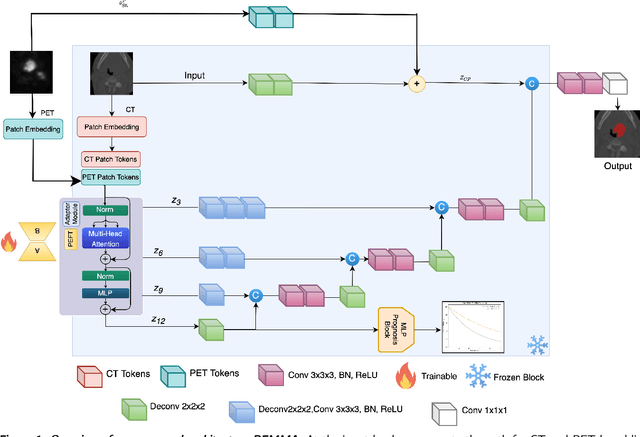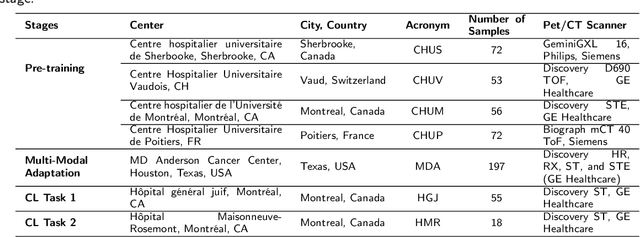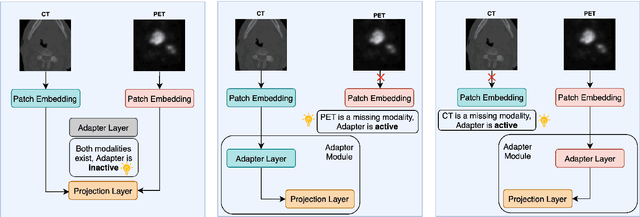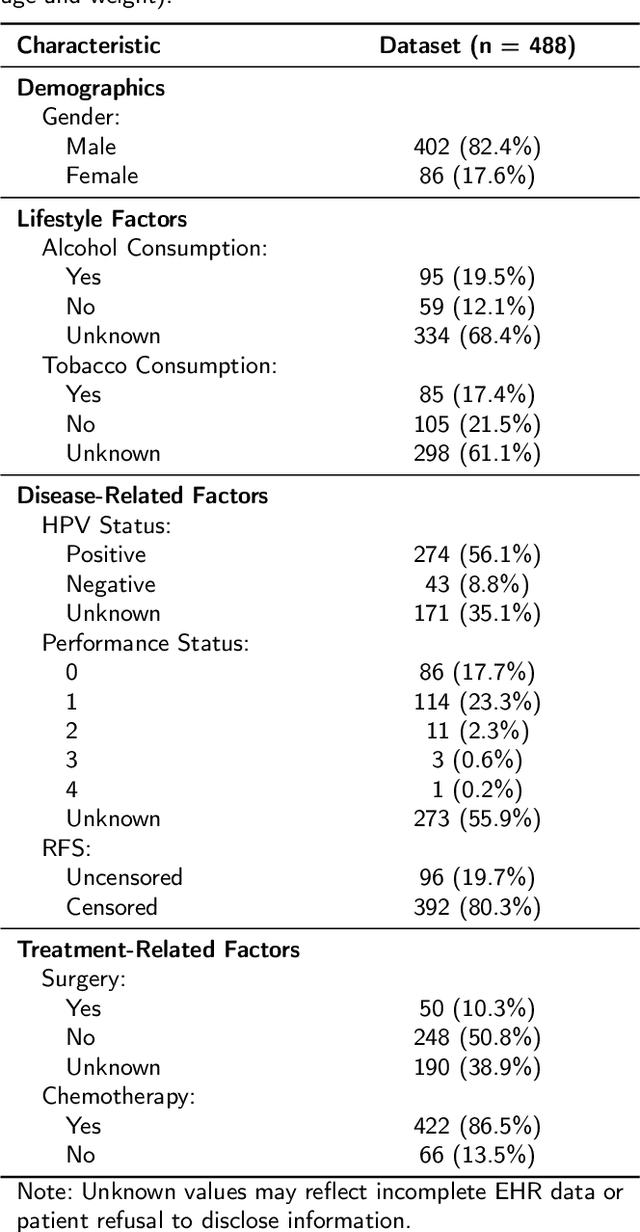Karthik Nandakumar
Stochastic Self-Organization in Multi-Agent Systems
Oct 01, 2025Abstract:Multi-agent systems (MAS) based on Large Language Models (LLMs) have the potential to solve tasks that are beyond the reach of any single LLM. However, this potential can only be realized when the collaboration mechanism between agents is optimized. Specifically, optimizing the communication structure between agents is critical for fruitful collaboration. Most existing approaches rely on fixed topologies, pretrained graph generators, optimization over edges, or employ external LLM judges, thereby adding to the complexity. In this work, we introduce a response-conditioned framework that adapts communication on-the-fly. Agents independently generate responses to the user query and assess peer contributions using an approximation of the Shapley value. A directed acyclic graph (DAG) is then constructed to regulate the propagation of the responses among agents, which ensures stable and efficient message transmission from high-contributing agents to others. This graph is dynamically updated based on the agent responses from the previous collaboration round. Since the proposed framework enables the self-organization of agents without additional supervision or training, we refer to it as SelfOrg. The SelfOrg framework goes beyond task- and query-level optimization and takes into account the stochastic nature of agent responses. Experiments with both strong and weak LLM backends demonstrate robust performance, with significant gains in the weak regime where prior methods collapse. We also theoretically show that multiple agents increase the chance of correctness and that the correct responses naturally dominate the information flow.
Calibration-Aware Prompt Learning for Medical Vision-Language Models
Sep 18, 2025Abstract:Medical Vision-Language Models (Med-VLMs) have demonstrated remarkable performance across diverse medical imaging tasks by leveraging large-scale image-text pretraining. However, their confidence calibration is largely unexplored, and so remains a significant challenge. As such, miscalibrated predictions can lead to overconfident errors, undermining clinical trust and decision-making reliability. To address this, we introduce CalibPrompt, the first framework to calibrate Med-VLMs during prompt tuning. CalibPrompt optimizes a small set of learnable prompts with carefully designed calibration objectives under scarce labeled data regime. First, we study a regularizer that attempts to align the smoothed accuracy with the predicted model confidences. Second, we introduce an angular separation loss to maximize textual feature proximity toward improving the reliability in confidence estimates of multimodal Med-VLMs. Extensive experiments on four publicly available Med-VLMs and five diverse medical imaging datasets reveal that CalibPrompt consistently improves calibration without drastically affecting clean accuracy. Our code is available at https://github.com/iabh1shekbasu/CalibPrompt.
First-Place Solution to NeurIPS 2024 Invisible Watermark Removal Challenge
Aug 28, 2025Abstract:Content watermarking is an important tool for the authentication and copyright protection of digital media. However, it is unclear whether existing watermarks are robust against adversarial attacks. We present the winning solution to the NeurIPS 2024 Erasing the Invisible challenge, which stress-tests watermark robustness under varying degrees of adversary knowledge. The challenge consisted of two tracks: a black-box and beige-box track, depending on whether the adversary knows which watermarking method was used by the provider. For the beige-box track, we leverage an adaptive VAE-based evasion attack, with a test-time optimization and color-contrast restoration in CIELAB space to preserve the image's quality. For the black-box track, we first cluster images based on their artifacts in the spatial or frequency-domain. Then, we apply image-to-image diffusion models with controlled noise injection and semantic priors from ChatGPT-generated captions to each cluster with optimized parameter settings. Empirical evaluations demonstrate that our method successfully achieves near-perfect watermark removal (95.7%) with negligible impact on the residual image's quality. We hope that our attacks inspire the development of more robust image watermarking methods.
FaceAnonyMixer: Cancelable Faces via Identity Consistent Latent Space Mixing
Aug 07, 2025Abstract:Advancements in face recognition (FR) technologies have amplified privacy concerns, necessitating methods that protect identity while maintaining recognition utility. Existing face anonymization methods typically focus on obscuring identity but fail to meet the requirements of biometric template protection, including revocability, unlinkability, and irreversibility. We propose FaceAnonyMixer, a cancelable face generation framework that leverages the latent space of a pre-trained generative model to synthesize privacy-preserving face images. The core idea of FaceAnonyMixer is to irreversibly mix the latent code of a real face image with a synthetic code derived from a revocable key. The mixed latent code is further refined through a carefully designed multi-objective loss to satisfy all cancelable biometric requirements. FaceAnonyMixer is capable of generating high-quality cancelable faces that can be directly matched using existing FR systems without requiring any modifications. Extensive experiments on benchmark datasets demonstrate that FaceAnonyMixer delivers superior recognition accuracy while providing significantly stronger privacy protection, achieving over an 11% gain on commercial API compared to recent cancelable biometric methods. Code is available at: https://github.com/talha-alam/faceanonymixer.
Mitigating Watermark Stealing Attacks in Generative Models via Multi-Key Watermarking
Jul 10, 2025Abstract:Watermarking offers a promising solution for GenAI providers to establish the provenance of their generated content. A watermark is a hidden signal embedded in the generated content, whose presence can later be verified using a secret watermarking key. A threat to GenAI providers are \emph{watermark stealing} attacks, where users forge a watermark into content that was \emph{not} generated by the provider's models without access to the secret key, e.g., to falsely accuse the provider. Stealing attacks collect \emph{harmless} watermarked samples from the provider's model and aim to maximize the expected success rate of generating \emph{harmful} watermarked samples. Our work focuses on mitigating stealing attacks while treating the underlying watermark as a black-box. Our contributions are: (i) Proposing a multi-key extension to mitigate stealing attacks that can be applied post-hoc to any watermarking method across any modality. (ii) We provide theoretical guarantees and demonstrate empirically that our method makes forging substantially less effective across multiple datasets, and (iii) we formally define the threat of watermark forging as the task of generating harmful, watermarked content and model this threat via security games.
LoFT: Low-Rank Adaptation That Behaves Like Full Fine-Tuning
May 27, 2025Abstract:Large pre-trained models are commonly adapted to downstream tasks using parameter-efficient fine-tuning methods such as Low-Rank Adaptation (LoRA), which injects small trainable low-rank matrices instead of updating all weights. While LoRA dramatically reduces trainable parameters with little overhead, it can still underperform full fine-tuning in accuracy and often converges more slowly. We introduce LoFT, a novel low-rank adaptation method that behaves like full fine-tuning by aligning the optimizer's internal dynamics with those of updating all model weights. LoFT not only learns weight updates in a low-rank subspace (like LoRA) but also properly projects the optimizer's first and second moments (Adam's momentum and variance) into the same subspace, mirroring full-model updates. By aligning the low-rank update itself with the full update, LoFT eliminates the need for tuning extra hyperparameters, e.g., LoRA scaling factor $\alpha$. Empirically, this approach substantially narrows the performance gap between adapter-based tuning and full fine-tuning and consistently outperforms standard LoRA-style methods, all without increasing inference cost.
Efficient Parameter Adaptation for Multi-Modal Medical Image Segmentation and Prognosis
Apr 18, 2025



Abstract:Cancer detection and prognosis relies heavily on medical imaging, particularly CT and PET scans. Deep Neural Networks (DNNs) have shown promise in tumor segmentation by fusing information from these modalities. However, a critical bottleneck exists: the dependency on CT-PET data concurrently for training and inference, posing a challenge due to the limited availability of PET scans. Hence, there is a clear need for a flexible and efficient framework that can be trained with the widely available CT scans and can be still adapted for PET scans when they become available. In this work, we propose a parameter-efficient multi-modal adaptation (PEMMA) framework for lightweight upgrading of a transformer-based segmentation model trained only on CT scans such that it can be efficiently adapted for use with PET scans when they become available. This framework is further extended to perform prognosis task maintaining the same efficient cross-modal fine-tuning approach. The proposed approach is tested with two well-known segementation backbones, namely UNETR and Swin UNETR. Our approach offers two main advantages. Firstly, we leverage the inherent modularity of the transformer architecture and perform low-rank adaptation (LoRA) as well as decomposed low-rank adaptation (DoRA) of the attention weights to achieve parameter-efficient adaptation. Secondly, by minimizing cross-modal entanglement, PEMMA allows updates using only one modality without causing catastrophic forgetting in the other. Our method achieves comparable performance to early fusion, but with only 8% of the trainable parameters, and demonstrates a significant +28% Dice score improvement on PET scans when trained with a single modality. Furthermore, in prognosis, our method improves the concordance index by +10% when adapting a CT-pretrained model to include PET scans, and by +23% when adapting for both PET and EHR data.
Aequa: Fair Model Rewards in Collaborative Learning via Slimmable Networks
Feb 07, 2025



Abstract:Collaborative learning enables multiple participants to learn a single global model by exchanging focused updates instead of sharing data. One of the core challenges in collaborative learning is ensuring that participants are rewarded fairly for their contributions, which entails two key sub-problems: contribution assessment and reward allocation. This work focuses on fair reward allocation, where the participants are incentivized through model rewards - differentiated final models whose performance is commensurate with the contribution. In this work, we leverage the concept of slimmable neural networks to collaboratively learn a shared global model whose performance degrades gracefully with a reduction in model width. We also propose a post-training fair allocation algorithm that determines the model width for each participant based on their contributions. We theoretically study the convergence of our proposed approach and empirically validate it using extensive experiments on different datasets and architectures. We also extend our approach to enable training-time model reward allocation.
A Framework for Double-Blind Federated Adaptation of Foundation Models
Feb 03, 2025Abstract:The availability of foundational models (FMs) pre-trained on large-scale data has advanced the state-of-the-art in many computer vision tasks. While FMs have demonstrated good zero-shot performance on many image classification tasks, there is often scope for performance improvement by adapting the FM to the downstream task. However, the data that is required for this adaptation typically exists in silos across multiple entities (data owners) and cannot be collated at a central location due to regulations and privacy concerns. At the same time, a learning service provider (LSP) who owns the FM cannot share the model with the data owners due to proprietary reasons. In some cases, the data owners may not even have the resources to store such large FMs. Hence, there is a need for algorithms to adapt the FM in a double-blind federated manner, i.e., the data owners do not know the FM or each other's data, and the LSP does not see the data for the downstream tasks. In this work, we propose a framework for double-blind federated adaptation of FMs using fully homomorphic encryption (FHE). The proposed framework first decomposes the FM into a sequence of FHE-friendly blocks through knowledge distillation. The resulting FHE-friendly model is adapted for the downstream task via low-rank parallel adapters that can be learned without backpropagation through the FM. Since the proposed framework requires the LSP to share intermediate representations with the data owners, we design a privacy-preserving permutation scheme to prevent the data owners from learning the FM through model extraction attacks. Finally, a secure aggregation protocol is employed for federated learning of the low-rank parallel adapters. Empirical results on four datasets demonstrate the practical feasibility of the proposed framework.
Robust-LLaVA: On the Effectiveness of Large-Scale Robust Image Encoders for Multi-modal Large Language Models
Feb 03, 2025



Abstract:Multi-modal Large Language Models (MLLMs) excel in vision-language tasks but remain vulnerable to visual adversarial perturbations that can induce hallucinations, manipulate responses, or bypass safety mechanisms. Existing methods seek to mitigate these risks by applying constrained adversarial fine-tuning to CLIP vision encoders on ImageNet-scale data, ensuring their generalization ability is preserved. However, this limited adversarial training restricts robustness and broader generalization. In this work, we explore an alternative approach of leveraging existing vision classification models that have been adversarially pre-trained on large-scale data. Our analysis reveals two principal contributions: (1) the extensive scale and diversity of adversarial pre-training enables these models to demonstrate superior robustness against diverse adversarial threats, ranging from imperceptible perturbations to advanced jailbreaking attempts, without requiring additional adversarial training, and (2) end-to-end MLLM integration with these robust models facilitates enhanced adaptation of language components to robust visual features, outperforming existing plug-and-play methodologies on complex reasoning tasks. Through systematic evaluation across visual question-answering, image captioning, and jail-break attacks, we demonstrate that MLLMs trained with these robust models achieve superior adversarial robustness while maintaining favorable clean performance. Our framework achieves 2x and 1.5x average robustness gains in captioning and VQA tasks, respectively, and delivers over 10% improvement against jailbreak attacks. Code and pretrained models will be available at https://github.com/HashmatShadab/Robust-LLaVA.
 Add to Chrome
Add to Chrome Add to Firefox
Add to Firefox Add to Edge
Add to Edge